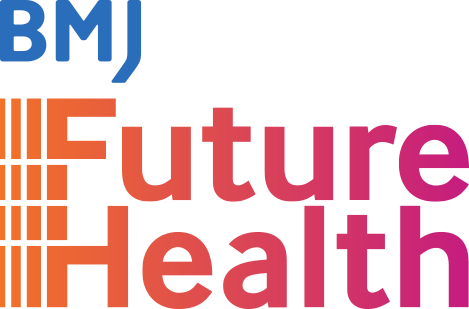Navigating the Digital Health Landscape
In this presentation, Alison, the SVP of ORCHA, will delve into the dynamic realm of digital health and its integration into clinical practice. As technology continues to revolutionise healthcare, Alison will explore the myriad opportunities it presents, the inevitable challenges faced, and the essential requirements for successful integration.
Expert: Alison Johnson, Senior Vice President of UK Health Systems, ORCHA
Summary of the webinar:
Introduction
- Helen Surana welcomed participants, introduced the BMJ Future Health program, and highlighted the upcoming November event for which registration is now open.
- Speaker: Alison Johnson, SVP of UK Health Systems at ORCHA (Organisation for the Review of Care and Health Apps), introduced her extensive NHS background in operations, transformation, and patient pathways before transitioning to digital health at ORCHA.
Key Topics Covered in the Webinar
- Introduction to Digital Health & Its Opportunities
- Barriers to Adoption of Digital Health Apps
- Safety, Evidence, & Evaluation Standards for Digital Health
- Integrating Digital Health into Clinical & Patient Pathways
- Activation Strategies to Scale Digital Health Adoption
1. The Digital Health Opportunity
- Why Digital Health is Growing Rapidly
- Over 6 billion people worldwide have access to smartphones—more than the number who own a toothbrush.
- Over 5 million people download a health app daily, leading to an explosion in patient-facing digital health solutions.
- 93% of clinicians believe digital health can improve patient care.
- 65+ age group is increasingly engaging with health apps, challenging common assumptions about technology hesitancy in older adults.
- Global Trends in Patient-Facing Digital Health
- Countries leading in digital health adoption include the UK, Germany, the USA, Canada, and the Nordic countries.
- The COVID-19 pandemic accelerated digital adoption and created a need for strong evaluation frameworks to ensure the safety of these solutions.
2. Barriers to Adoption of Digital Health Apps
Despite the potential of digital health, significant challenges exist:
- Lack of Trust & Safety Concerns
- Over 365,000 health apps exist globally, but only 20% meet quality thresholds.
- Many apps lack regulatory approval, clinical evidence, or privacy safeguards.
- Difficulty in Identifying High-Quality Apps
- Clinicians & healthcare systems struggle to determine which apps are safe and effective.
- Unlike medications (regulated by MHRA & NICE in the UK), digital health apps lacked a structured evaluation process—until now.
- Ensuring Regulatory Compliance
- Digital health solutions require rigorous governance similar to medication regulation.
- ORCHA and other bodies ensure digital tools undergo systematic evaluation using recognized frameworks.
3. Safety, Evidence & Evaluation: The ORCHA Approach
Key Digital Health Assessment Frameworks
ORCHA works across multiple international assessment frameworks to ensure apps meet clinical, technical, and security standards:
- UK NHS DTAC (Digital Technology Assessment Criteria).
- ISO 82304 (International Clinical & Safety Standards).
- DIGA (Germany).
- Nordic Digital Health Framework (5 countries).
- USA Digital Health Evaluation Framework (DHEF).
- Canada’s Mental Health Commission Assessment Standards.
ORCHA’s Digital Health Assurance Process
- ORCHA’s Global Baseline Review aligns with international safety and security criteria.
- 350+ assessment criteria ensure apps meet GDPR, NICE evidence standards, ISO certifications, and cybersecurity regulations.
- Apps that fail compliance checks are removed from ORCHA’s digital library.
- Continuous review & real-time monitoring ensure digital solutions remain compliant.
NHS DTAC Certification
- Mandatory for any digital health app used within the NHS.
- Covers clinical safety, data protection, technical assurance, and interoperability.
- Annual reassessment ensures continuous compliance.
4. Integrating Digital Health into Patient Pathways
ORCHA develops digital care pathways by identifying pain points in clinical workflows and integrating approved digital solutions.
Example: COPD (Chronic Obstructive Pulmonary Disease) Patient Pathway
- Prevention: Smoking cessation & environmental monitoring apps.
- Diagnosis & Assessment: Remote monitoring & patient education tools.
- Treatment & Medication Management: Apps for tracking inhaler use & adherence.
- Rehabilitation & Ongoing Support: Digital pulmonary rehab & self-management apps.
Example: Elective Surgery (Hip Replacement) Pathway
- Pre-Surgery: Weight loss, exercise, and pain management apps.
- Surgical Process: Remote pre-op assessment & patient education apps.
- Post-Surgery: Rehabilitation, medication management, and care coordination tools.
Key Takeaway:
There is no single “best” app—a portfolio of solutions is needed to support different stages of patient care.
5. Activation Strategies for Scaling Digital Health Adoption
How ORCHA Helps Scale Digital Health Across Systems
- Identifying Clinician & Patient Needs: Customizing app recommendations based on clinical priorities.
- Digital Formulary Creation: Curating safe, NHS-approved apps for easy clinician access.
- Digital Health Academy: CPD-accredited online learning to educate clinicians on using digital health effectively.
- Patient Self-Service Libraries: Allowing patients to find and download recommended apps directly.
ORCHA’s Digital Prescribing & Recommendation System
- Clinicians can search for approved apps within ORCHA’s formulary.
- Each app is scored for safety, usability, and security.
- Apps can be directly recommended to patients via text or email from the formulary.
Live Demonstration of ORCHA’s Digital Health Platforms
Alison provided a walkthrough of:
- Patient-Facing Digital Health Library – where patients can search & download safe, curated health apps.
- Clinician-Facing Digital Formulary – allowing healthcare professionals to prescribe and recommend apps based on validated safety scores.
- Digital Care Pathways – examples of structured digital health solutions for COPD, diabetes, mental health, and elective surgery.
Key Questions & Discussion
- Why is the 18-Month Review Rule in Place?
- Apps must be updated regularly to remain in ORCHA’s library.
- If an app hasn’t been updated in 18 months, ORCHA removes it due to safety concerns.
- How Does ORCHA Differentiate Between Patient & Clinician Apps?
- ORCHA categorizes apps as:
- Administrative tools (e.g., appointment scheduling).
- Clinician education tools (e.g., heart failure pathway guidance).
- Patient-facing digital health solutions.
- Apps are rated from Level 1 to Level 4, depending on their clinical complexity & regulatory requirements.
- ORCHA categorizes apps as:
- How Can Digital Health Integration Work with NHS Resource Limitations?
- Workflow mapping ensures digital health fits into clinical practice without adding extra burden.
- Some digital recommendations can be automated (e.g., batch SMS for chronic conditions like diabetes).
- Evidence shows that digital health solutions reduce appointment burden and improve efficiency.
- How Does ORCHA Assess Security in Medical Apps?
- ORCHA follows NHS Cyber Essentials Plus & ISO security standards.
- Real-time monitoring ensures compliance with data protection laws.
Final Takeaways
- Digital health must be evidence-based, safe, and patient-centered.
- ORCHA ensures high-quality, regulatory-approved apps reach both clinicians & patients.
- Pathway-driven digital health integration improves patient outcomes while supporting NHS efficiency.
- ORCHA’s system simplifies digital prescribing, reducing barriers to adoption.


